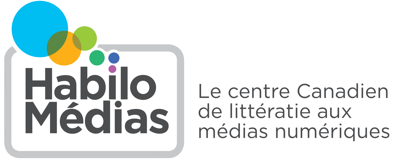Quebec Competencies Chart - Media literacy key concepts Lesson 2: Media are constructions
Author: MediaSmarts has partnered with Concerned Children’s Advertisers to develop a suite of videos on each of the media literacy key concepts.
Level: Grade 4-6
Lesson Length: 45-90 minutes
Lesson Link: http://habilomedias.ca/ressources-p%C3%A9dagogiques/minutes-m%C3%A9dias-le%C3%A7on-2-les-m%C3%A9dias-sont-des-constructions
Description: In this lesson, students watch a video introducing the media literacy key concept that media are constructions. They then explore this concept by considering a pair of cereal boxes and identifying the different elements of the box and the purposes they serve. In an optional final task, students pick a target audience and create their own cereal box to appeal to that audience.
Cross-curricular Competencies |
Broad Areas of Learning |
|
|
This lesson satisfies the following Competencies from the Quebec Education Program:
English Language Arts
To Read and Listen to Literary, Popular and Information-Based Texts
- To use a response process when reading and listening to literary, popular, and information-based texts
- To construct her/his own view of the world through reading and listening to literary, popular and information-based texts
- To construct a profile of self as reader
- To self-evaluate her/his reading development
- To construct meaning by applying appropriate reading strategies
To Represent Her/His Literacy in Different Media
- To apply appropriate strategies for constructing meaning
- To self-evaluate her/his development as a viewer and producer of media texts
- To follow a process to respond to media texts
- To construct her/his own view of the world through the media
- To follow a production process in order to communicate for specific purposes to a specified audience
To Use Language to Communicate and Learn
- To use language (talk) to communicate information, experiences and point of view
- To self-evaluate her/his language development
- To use language (talk) for learning and thinking
- To apply her/his knowledge of linguistic structures and features
- To interact in collaborative group activities in a variety of roles
Visual Arts
To produce media works in the visual arts
- To use creative ideas inspired by a stimulus for creation of media works
- To share his/her experience of media creation
- To use transforming gestures and elements of visual arts language according to the message and the intended viewer
- To organize the elements that he/she has chosen, depending on the message and the intended viewer
- To finalize his/her media creation
